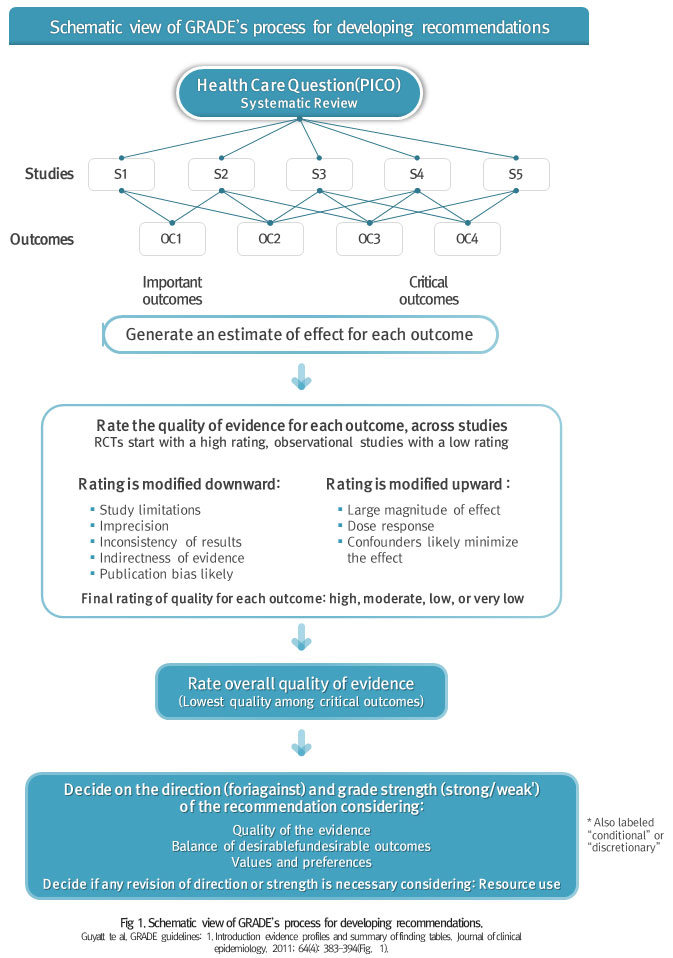- About NECA
About NECA
NECA, a public agency devoted to the improvement of national health and future of healthcare - What we do
What we do
NECA, a public agency devoted to the improvement of national health and future of healthcare - Publication
Publication
NECA, a public agency devoted to the improvement of national health and future of healthcare - International Cooperation
International Cooperation
NECA, a public agency devoted to the improvement of national health and future of healthcare - NECA GRADE Center
NECA GRADE Center
NECA, a public agency devoted to the improvement of national health and future of healthcare
Introduction of GRADE methodology
Overview
- GRADE is a methodology proposed by the GRADE Working Group to determine the certainty of evidence and strength of recommendation. GRADE provides a systematic and transparent method for defining key questions and health outcomes as well as in determining the certainty of evidence and strength of recommendation.
Determination of certainty of evidence according to GRADE
- The basic approach is based on determining the certainty of evidence for each health outcome through a systematic review. Therefore, it is necessary to determine the importance of the research findings in advance.
- Once the results are derived through a systematic literature review process, the quality of evidence may be lowered by one or two levels if the following factors are observed: ❶ risk of bias, ❷ heterogeneity (inconsistency), ❸ indirectness, ❹ imprecision, and ❺ publication bias. In observational studies, if there is no problem in quality, the quality of evidence may be increased by evaluating the following factors: ❶ large magnitude of an effect, ❷ effects of confounding variables on the estimation of the certainty of effect, and ❸ dose-response gradient(Fig 1).

Determination of strength of recommendation according to GRADE
- The grading of recommendation is determined by the direction of the recommendation and by the size of the desirable effect (benefit) and undesirable effect (harm) of the intervention. When the desired effect is greater than the undesired effect, the intervention will be recommended (for). In contrast, when the undesirable effect outweighs the desirable effect, the intervention will not be recommended ('against') (Fig 2).
- The scope for the evidence to decision (EtD) framework has recently been expanded to include clinical practice guidelines, national health insurance coverage, as well as health care and has considered additional factors such as priority, acceptability, equity and applicability of the problem in addition to the four basic elements (desirable and undesirable effects, certainty of effects, reliability in the values and preferences, and resource use).
- Further details for determining the certainty of evidence and the strength of recommendation can be found in the ‘Handbook for Clinical Practice Guideline Developer: GRADE Methodology published by NECA (provided in the link after the final product is uploaded in PDF format).

Overview
- GRADE is a methodology proposed by the GRADE Working Group to determine the certainty of evidence and strength of recommendation. GRADE provides a systematic and transparent method for defining key questions and health outcomes as well as in determining the certainty of evidence and strength of recommendation.

















